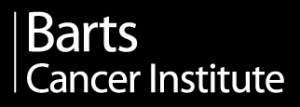January 12
2012
Biodesign Auditorium
727 E. Tyler St. Tempe
AZ 85287
A conceptual framework successfully developed for quantitatively understanding and predicting many physiological and dynamical properties of mammals and plants, including metabolic rates, ontogenetic growth trajectories and vascular structure, is extended to tumors. The theory presumes that life at all scales from intra- to multi-cellular levels is sustained by space-filling, fractal-like, hierarchical branching networks whose “universal” geometric and dynamical properties provide a mathematical framework that captures the essential features of these diverse systems. When applied to tumors (and their interface with host tissue) the theory yields extensive quantitative predictions for many of their properties, including growth rates, metabolic rates, degree of necrosis, blood flow rates, capillary density and vessel sizes, in good agreement with data. In addition, it shows how these properties depend on both tumor and host size thereby explaining why similar tumors grow systematically slower and occur less frequently in larger animals, shedding light on Peto’s paradox. The role of damage (and consequent entropy production) due to dissipative forces in host networks as a generator of tumors and its relationship to aging, mortality and sleep will be explored. Possible implications for potential therapeutic strategies will be discussed.



